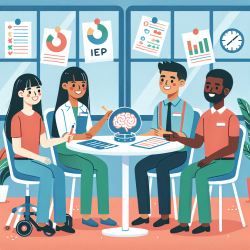Key Findings from the Study
The study analyzed data from school entry examinations in Brandenburg, Germany, across three cohorts: before the pandemic (2018/2019), at the beginning of the pandemic (2019/2020), and during the pandemic (2020/2021). Here are the key findings:- The overall prevalence of language delay (LD) decreased slightly from 21.1% (2018/2019) to 18.8% (2020/2021).
- Children from high socioeconomic position (SEP) families showed a decrease in LD prevalence, while children from low SEP families showed an increase.
- LD prevalence remained stable among non-native German speakers but decreased among native German speakers.
- Longer kindergarten attendance (≥4 years) was associated with a lower likelihood of LD.
Implications for Practitioners
These findings underscore the need for targeted interventions to address the increasing social inequalities in language development. Here are actionable steps practitioners can take:1. Prioritize Early Interventions for Low SEP Families
The study found that children from low SEP families were disproportionately affected by language delays. Practitioners should:- Implement targeted language development programs in low SEP communities.
- Engage parents through workshops and resources that emphasize the importance of early language exposure and interaction.
2. Support Non-Native German Speakers
Children with a migration background faced persistent language delays. To support these children:- Develop bilingual language support programs that integrate native language skills with German language acquisition.
- Provide culturally relevant materials and resources to bridge language gaps.
3. Advocate for Extended Kindergarten Attendance
Longer kindergarten attendance was shown to be beneficial. Practitioners should:- Advocate for policies that promote extended kindergarten attendance, especially in underprivileged areas.
- Collaborate with kindergartens to ensure they offer robust language development curricula.
Encouraging Further Research
While the study provides valuable insights, it also highlights the need for further research to explore other potential determinants of language delay, such as parental investment and regional socioeconomic factors. Practitioners are encouraged to:- Participate in or initiate longitudinal studies to track language development over time.
- Collaborate with researchers to identify and address gaps in the current understanding of language development inequalities.
By integrating these research findings into practice, we can take significant steps towards mitigating the impact of social inequalities on children's language development.
To read the original research paper, please follow this link: Social inequalities in early childhood language development during the COVID-19 pandemic: a descriptive study with data from three consecutive school entry surveys in Germany.










